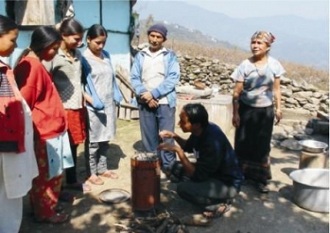Int. J. Environ. Res. Public Health 2012, 9, 1566-1580; doi:10.3390/ijerph9051566
“It Is Good for My Family’s Health and Cooks Food in a Way That My Heart Loves”: Qualitative Findings and Implications for Scaling Up an Improved Cookstove Project in Rural Kenya
Bobbie Person, et al.
The use of indoor, three-stone fire pits in resource–poor countries is a substantial burden on human health and the environment. We conducted a pilot intervention promoting the purchase and use of an improved cookstove in rural Kenya. The goals of this qualitative inquiry were to understand the motivation to purchase and use; perceived benefits and challenges of cookstove use; and the most influential promotion activities for scaling up future cookstove promotion. Purposive sampling was used to recruit 10 cookstove promoters and 30 cookstove purchasers in the Luo community.
Qualitative semi-structured interviews were transcribed and a thematic analysis conducted. Women reported the need for less firewood, fuel cost savings, reduced smoke, improved cooking efficiency, reduced eye irritation, lung congestion and coughing as major benefits of the cookstove. Cost appeared to be a barrier to wider adoption. The most persuasive promotion strategies were interpersonal communication through social networks and cooking demonstrations. Despite this cost barrier, many women still considered the improved cookstove to be a great asset within their household. This inquiry provided important guidance for future cookstove implementation projects.




